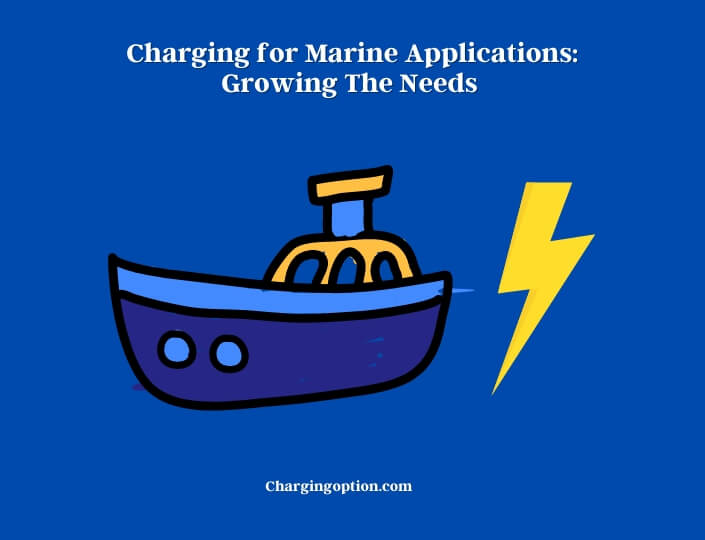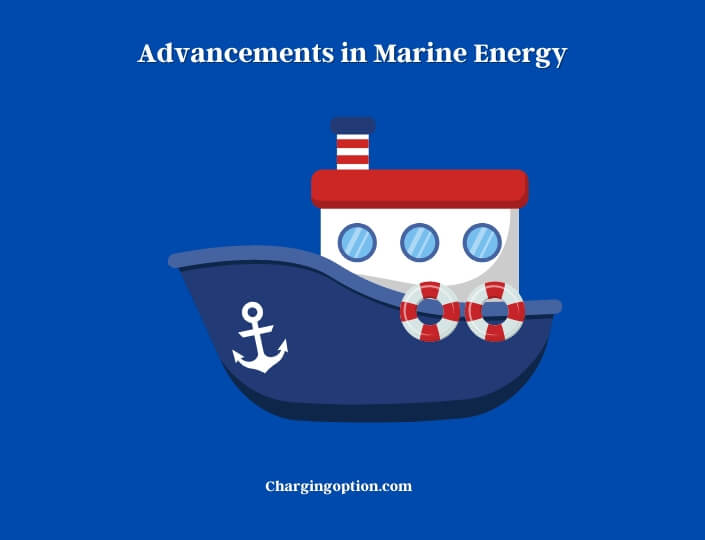Marine applications are becoming increasingly important in today’s world. From navigation to fishing and aquaculture, oil and gas exploration, environmental monitoring, and shipping and logistics, these applications help individuals and businesses alike to manage and utilize marine resources more effectively. As our world becomes more interconnected and reliant on technology, the demand for marine applications is only going to increase.

Marine application development can be costly due to the complexity of marine environments, making it difficult for developers to generate sufficient revenue. As a result, there is a need for sustainable revenue streams for marine application development to ensure that developers can continue to innovate and create solutions that address the challenges of marine environments.
Charging for Marine Applications
Charging for marine applications refers to the process of replenishing the electrical energy stored in batteries or other power storage systems used in boats, ships, and other watercraft.
This charging can be achieved through various means, such as connecting the batteries to an external power source, using solar panels, or harnessing the power of the wind with wind turbines.
The charging process is essential to ensure that the marine vessels have a reliable source of power to operate critical equipment and systems, such as navigation, communication, and lighting.
Types of Marine Applications
There are various types of marine applications that are essential for different purposes. Here are some of the most common types of marine applications:
Navigation and Route Planning
Navigation applications assist with the planning of routes, determining current and expected weather conditions, and providing real-time location and movement data. They also help in avoiding potential hazards in the water, such as rocks, reefs, and shallow areas.
Fishing and Aquaculture
These applications aid in fish and shellfish farming by providing insights into water quality, water depth, and temperature. They also assist in locating schools of fish and analyzing fish behavior, as well as help fishermen with weather conditions and route planning.
Oil and Gas Exploration
These applications support oil and gas exploration by providing insights into ocean floor topography, seafloor geology, and the location of oil and gas deposits. They also help with planning exploration and drilling operations and analyzing potential environmental impacts.
Environmental Monitoring
These applications help in monitoring oceanic and coastal ecosystems, including water quality, marine life, and weather patterns. They also assist with identifying and responding to potential environmental threats, such as oil spills or marine debris.
Shipping and Logistics
These applications assist in the management of cargo shipments by providing real-time tracking of shipping containers, vessel locations, and ports of call. They also help with scheduling and routing, as well as managing supply chain logistics.
Marine Energy Technologies
Marine energy technologies harness the energy from the ocean to produce electricity. They represent a promising alternative to traditional fossil fuels, providing a reliable and renewable source of energy that is both sustainable and environmentally friendly. Here are some of the most common types of marine energy technologies:
Wave Energy
Wave energy converters capture the kinetic energy of ocean waves and convert it into electricity. These devices can be installed offshore or near the shore, depending on the design and intended use.
Tidal Energy
Tidal turbines capture the energy of the tides as they flow in and out of coastal areas. These turbines are typically installed in areas with strong tidal currents, such as estuaries and bays.
Ocean Thermal Energy Conversion (OTEC)
OTEC technology harnesses the temperature difference between warm surface water and cold deep water to produce electricity. It is typically installed in tropical regions with consistent ocean temperature gradients.
Salinity Gradient Energy
Salinity gradient energy (SGE) utilizes the difference in salinity between freshwater and saltwater to produce electricity. This technology is still in the experimental stage but holds great promise for the future.
Offshore Wind Energy
Offshore wind turbines capture the energy from wind blowing over the ocean and convert it into electricity. They are typically installed in shallow waters off the coast.
Advancements in Marine Energy
Marine energy technologies have come a long way in recent years, with advancements in design, construction, and implementation. Here are some of the most significant advancements in marine energy:

Improved efficiency: New designs and engineering innovations have increased the efficiency of marine energy technologies, allowing them to produce more electricity with fewer resources.
Cost reduction: Cost has been a significant barrier to the adoption of marine energy technologies. Advancements in materials, manufacturing processes, and project management have helped to reduce costs significantly.
Deployment and maintenance: Marine energy technologies are complex and require specialized equipment and expertise for deployment and maintenance. Advancements in deployment and maintenance techniques have made it easier to install and maintain these devices, reducing downtime and improving overall reliability.
Energy storage: One of the biggest challenges with marine energy technologies has been storing the energy they produce. Advancements in energy storage technology, such as batteries and flywheels, have made it easier to store and use the energy produced by marine energy devices.
Integration with existing infrastructure: Marine energy technologies are being integrated with existing infrastructure, such as offshore wind farms and coastal power grids. This integration allows for more efficient use of energy resources and reduces the cost and complexity of deployment.
Challenges and Opportunities of Charging for Marine Applications
As with any technology, charging for marine applications presents both challenges and opportunities. Here are some of the key challenges and opportunities:
Challenges
Cost: Developing and maintaining marine applications can be expensive, which can make it challenging to charge for them at a price that is affordable for consumers.
Competition: The marine industry is highly competitive, with many players vying for market share. This competition can make it challenging to differentiate a marine application from competitors and charge a premium for it.
Market demand: The demand for marine applications can be unpredictable, as it is influenced by a range of factors, including weather patterns, economic conditions, and regulatory requirements.
Opportunities
Unique features: Marine applications often offer unique features and capabilities that are not available in other industries. These unique features can be used to differentiate the application and justify a premium price.
Niche markets: Marine applications may serve niche markets that are willing to pay a premium for specialized features or capabilities.
Subscription models: Subscription models can be an effective way to generate recurring revenue from marine applications. This model can provide a predictable revenue stream and help to cover the ongoing costs of developing and maintaining the application.
Advertising: Advertising can be an effective revenue stream for marine applications that are widely used by consumers. This model can help to offset the cost of developing and maintaining the application and generate additional revenue.
Future of Charging for Marine Applications
The future of charging for marine applications is promising, with continued growth and innovation expected in the marine industry. Here are some trends and developments that are likely to shape the future of charging for marine applications:
Sustainable Energy
With growing concern about climate change and the need to reduce greenhouse gas emissions, sustainable energy is becoming a top priority for many countries and industries. Marine applications that harness sustainable energy sources, such as wave and tidal energy, are likely to become increasingly popular and valuable.
Digitalization
The marine industry is undergoing a digital transformation, with the use of advanced technologies, such as artificial intelligence and the Internet of Things (IoT), becoming more widespread. These technologies are likely to create new opportunities for charging for marine applications, such as through data analytics and predictive maintenance.
Autonomous Systems
Autonomous systems, such as autonomous ships and underwater vehicles, are becoming more common in the marine industry. These systems have the potential to reduce costs and improve safety, but they also require specialized charging solutions.
Emerging Markets
The marine industry is expanding into new geographic and demographic markets, creating opportunities for new and innovative charging solutions. For example, the growing aquaculture industry requires specialized charging solutions for underwater devices and equipment.
Collaboration
Collaboration and partnerships between companies in the marine industry are likely to become more common, creating opportunities for joint charging solutions and revenue sharing.
Conclusion
Charging for marine applications presents both challenges and opportunities, but the future looks promising. As the marine industry continues to innovate and expand, new opportunities for charging for marine applications are likely to emerge, making it an exciting and dynamic field for developers and investors alike.
To succeed in charging for marine applications, developers need to carefully consider the unique features and capabilities of their application, the target market, and the competitive landscape. They also need to consider emerging trends and technologies, such as sustainable energy, digitalization, and autonomous systems.
